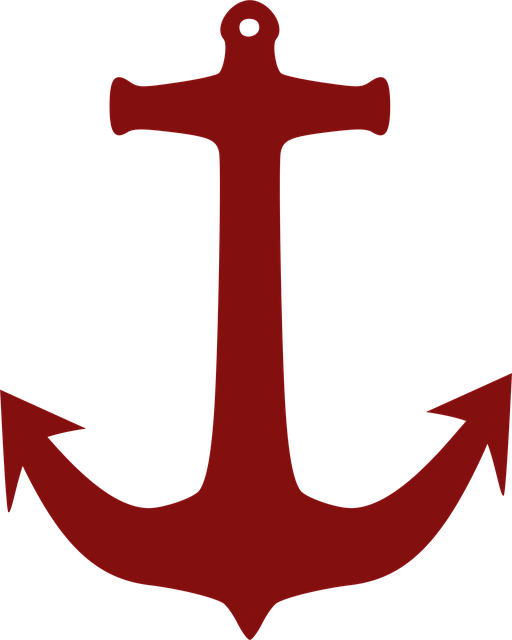Optimizing anchor text in internal linking for WordPress enhances SEO and user experience. Using relevant keywords and branded terms improves search engine rankings and navigation. Crafting natural links with specific keywords boosts clickability and relevance, guiding users through content. Regularly analyze and optimize anchor texts based on CTRs and SEO tool insights to refine the strategy.
Internal linking is a powerful strategy for enhancing user experience and boosting SEO in WordPress sites. This comprehensive guide explores practical approaches to master internal linking, focusing on anchor text optimization for WordPress. From understanding your site’s structure to creating compelling anchor text and measuring link performance, you’ll discover effective strategies to improve your website’s search engine rankings and keep visitors engaged.
- Understanding Internal Linking Structure in WordPress
- The Role of Anchor Text in SEO Optimization
- Effective Strategies for Anchor Text Creation
- Implementing Internal Links on Your Website
- Measuring Success: Tracking Internal Link Performance
- Best Practices for Continuous Improvement
Understanding Internal Linking Structure in WordPress

Understanding the internal linking structure in WordPress is a crucial step for any content creator aiming to optimize their website’s search engine visibility. This open-source platform provides an efficient framework to connect and interlink pages, allowing users to navigate through relevant content seamlessly. By implementing strategic internal linking, you can enhance both user experience and SEO performance.
In WordPress, anchor text optimization plays a vital role in your overall anchor text optimization strategy. It involves using descriptive and contextually relevant keywords as link anchors. For instance, if you’re linking to a page about “WordPress SEO tips,” the anchor text could be exactly that phrase. This technique not only makes links more click-worthy but also provides search engines with valuable context, helping them understand your website’s content hierarchy and relevance. Effective anchor text optimization SEO ensures that your internal links contribute positively to your site’s authority and ranking potential.
The Role of Anchor Text in SEO Optimization

In the realm of SEO optimization for WordPress websites, anchor text plays a pivotal role in enhancing search engine rankings and user experience. Anchor text refers to the clickable words or phrases embedded in hyperlinks that direct users from one page to another. When crafting internal links, optimizing these anchors is crucial. The primary goal is to create anchor text that accurately represents the linked page’s content while keeping the language natural and reader-friendly.
By implementing effective anchor text optimization strategies, such as using relevant keywords, variations in phrasing, and incorporating branded terms, website owners can improve their site’s visibility. This technique allows search engines to better understand the context of each linked page, resulting in higher rankings for targeted keywords. Moreover, it enhances user engagement by providing intuitive navigation, encouraging users to explore more relevant content within the site.
Effective Strategies for Anchor Text Creation

Creating effective anchor text is a critical component of internal linking success for any WordPress site. Since anchor text isn’t just about linking but also about communicating value to users and search engines, it’s crucial to craft each one thoughtfully. For anchor text optimization SEO, focus on making your links sound natural within the context of the surrounding content. Use specific keywords related to the linked page to provide a clear signal to both visitors and search algorithms about what they can expect to find.
Instead of generic phrases like “click here,” aim for concise, descriptive anchor texts that mirror the content of the target page. For instance, if linking to a post about “WordPress SEO best practices,” your anchor text could be simply “Learn WordPress SEO Best Practices.” This not only enhances user experience but also aids in anchor text optimization strategy by making links more clickable and relevant, ultimately contributing to better anchor text optimization tips and improved search engine rankings.
Implementing Internal Links on Your Website

Implementing internal links on your website is a strategic move that can significantly enhance user experience and improve search engine optimization (SEO). In WordPress, a content management system known for its flexibility, anchor text optimization plays a pivotal role in this process. By carefully choosing keywords as anchor text, you guide both users and search engines to relevant pages within your site. This technique not only facilitates navigation but also establishes the hierarchy of information, signaling to search algorithms which pages are most important and related.
When implementing internal links, focus on creating meaningful connections between content pieces. Anchor text optimization tips suggest using descriptive, contextually relevant keywords that accurately represent the linked page’s content. For instance, if you’re linking to a blog post about “WordPress SEO best practices,” ensure your anchor text reflects this, such as “Learn WordPress SEO Best Practices.” This approach not only improves click-through rates but also reinforces the overall optimization of your website by creating a structured and interlinked web of information.
Measuring Success: Tracking Internal Link Performance

Measuring success is a crucial step in optimizing your internal linking strategy. By tracking the performance of your internal links, you gain valuable insights into what’s working and where improvements can be made. In WordPress, one effective method to gauge success involves analyzing anchor text optimization for each link. This involves monitoring click-through rates (CTRs) from internal pages to identify high-performing links that are driving relevant traffic.
Using SEO tools designed for anchor text optimization tips, you can assess the diversity and quality of your anchor texts. A well-optimized strategy ensures that anchor texts are not only descriptive but also include relevant keywords related to the linked content. This approach aligns with best practices in anchor text optimization SEO, ultimately enhancing your site’s overall search engine visibility and user experience.
Best Practices for Continuous Improvement

To ensure continuous improvement when implementing internal linking strategies on your WordPress site, regularly review and refine your anchor text optimization techniques. Start by analyzing existing anchor texts to identify patterns—are they diverse and contextually relevant? Aim for a mix of generic keywords and specific phrases that naturally flow with your content. This balance helps search engines understand your links while keeping your writing natural and engaging.
Implement an anchor text optimization tutorial or strategy involving keyword research to uncover new, relevant terms. Tools like Google Keyword Planner or SEMrush can assist in finding less competitive yet high-intent keywords. Incorporate these insights into your content creation process, updating older posts with optimized anchor texts and ensuring new articles adhere to best practices from the outset. Regularly assess performance through analytics tools to measure the impact of these changes on user engagement and SEO metrics.
